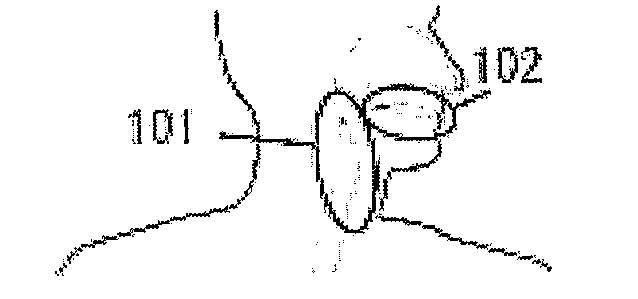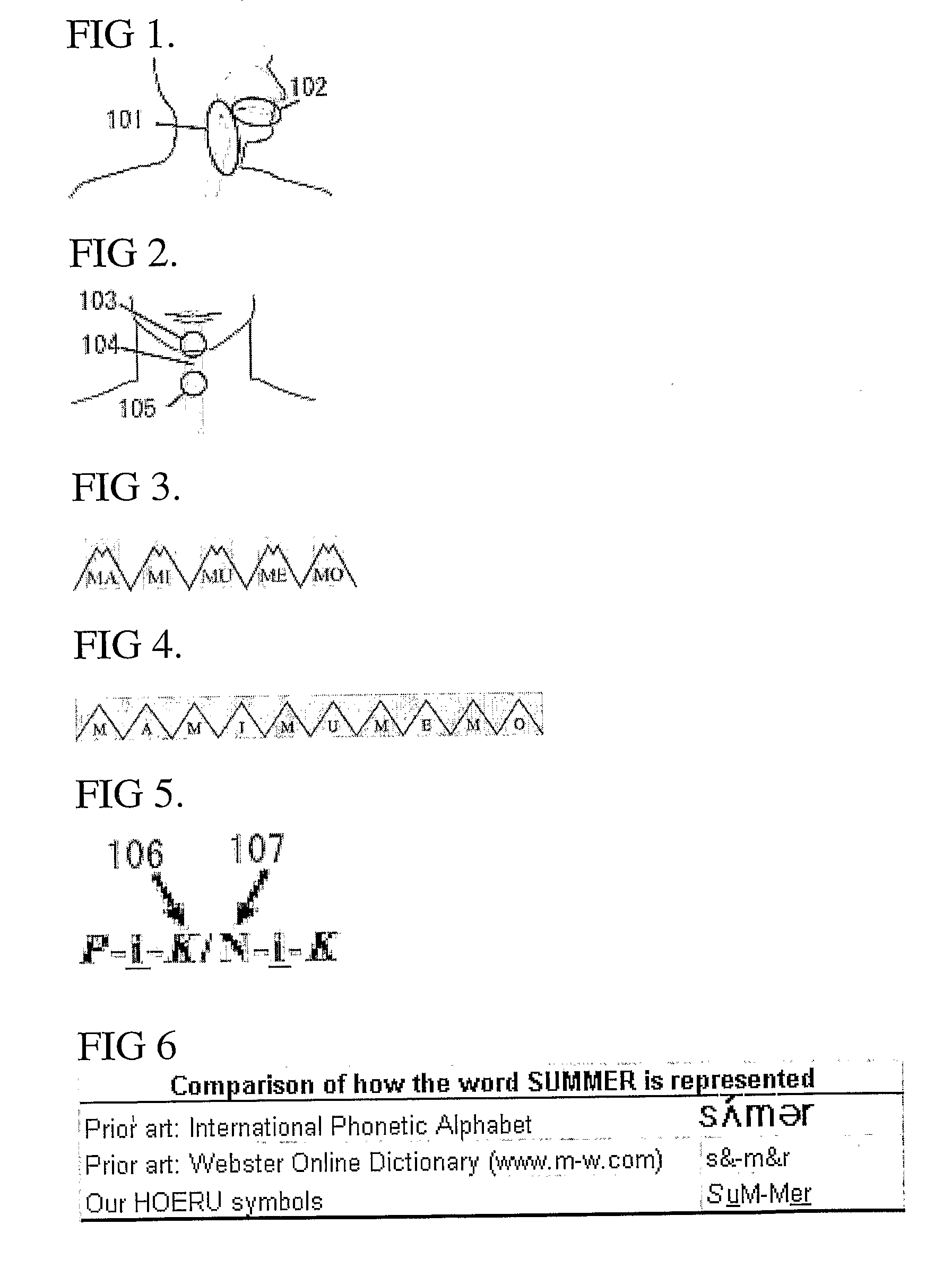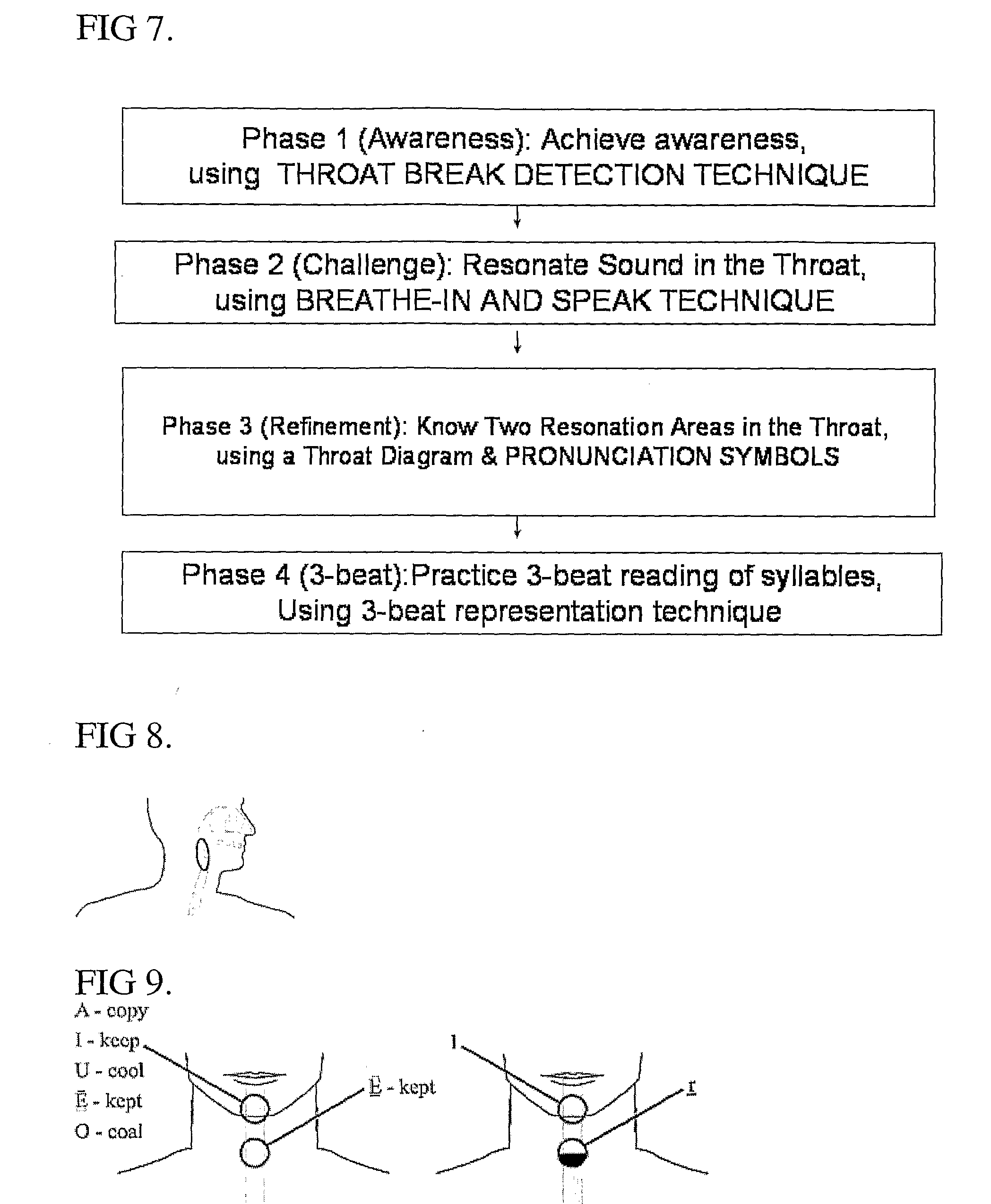System of sound representaion and pronunciation techniques for english and other european languages
a technology of sound representaion and pronunciation techniques, applied in the field of linguistics/phonology, can solve the problems of phonologists' description of consonants having unfortunate consequences for asian learners, all prior arts failed, and most prior arts failed
- Summary
- Abstract
- Description
- Claims
- Application Information
AI Technical Summary
Problems solved by technology
Method used
Image
Examples
Embodiment Construction
[0031]Two universal laws we discovered about European and Asian languages are the bases of our invention.
Discovery
Speaking Form the Throat
[0032]To reiterate, we discovered that European language users resonate most of sounds in the throat, while Asian language users, such as Japanese, Koreans, and Chinese, resonate most of sounds in the mouth. FIG. 1 shows the two different areas of the throat that Europeans and Asians use for sound resonation. Europeans resonate sounds in the throat (#101) and Asians resonate them in the mouth (#102).
1>
[0033]This is why speakers of many Asian languages cannot imitate European sounds well. To state this slightly differently, the reason why Asians cannot repeat what they hear (i.e., listen-and-repeat method fails) is because they rely on the mouth for sound resonation. To correct this, they should use the throat in the way we describe later. They cam easily produce the same sounds as native speakers, if they use our method.
[0034]According to our disc...
PUM
 Login to View More
Login to View More Abstract
Description
Claims
Application Information
 Login to View More
Login to View More - R&D
- Intellectual Property
- Life Sciences
- Materials
- Tech Scout
- Unparalleled Data Quality
- Higher Quality Content
- 60% Fewer Hallucinations
Browse by: Latest US Patents, China's latest patents, Technical Efficacy Thesaurus, Application Domain, Technology Topic, Popular Technical Reports.
© 2025 PatSnap. All rights reserved.Legal|Privacy policy|Modern Slavery Act Transparency Statement|Sitemap|About US| Contact US: help@patsnap.com



